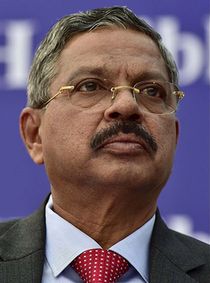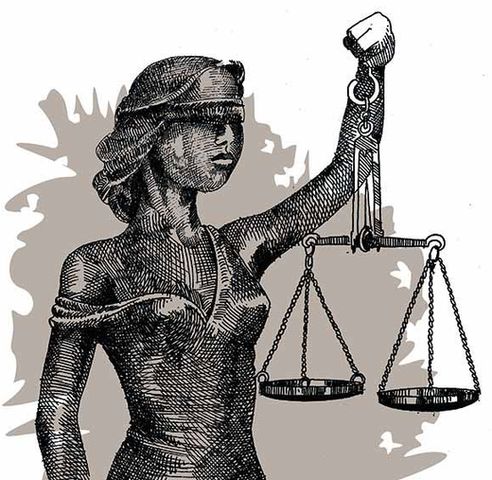
The second president of India, Dr S. Radhakrishnan, once remarked that it takes centuries to make a little history and centuries of history to make a tradition. A tradition is one imbibed and cherished by each generation. Today, we are the inheritors and guardians of common law traditions etched in the Magna Carta.
Written in dense Latin on sheepskin parchment, the Magna Carta has witnessed metamorphosis from being a peace treaty for England's warring nobility to an inspiration for many liberal modern constitutions and the passage of multiple historical events. It is the spark that led to the transformative revolution in the governance structure from 'Rex is Lex' to 'Lex is Rex' [King is Law to Law is King]. A constitutional document of endearing significance, it embodies this fundamental law of the realm, binding every citizen and body therein. It proclaims the fundamental nature of individual liberties. Through the ages, it has been a beacon of rule of law and given world citizens today the rightful liberties of due process and protections of common law. Since 1215, for Englishmen, it has stood as the written embodiment of the basic law that protects their rights and liberties regardless of the soils they set foot on.
While the liberties it protected would not find direct counterparts in modern democratic states, they indeed laid the foundation of most modern constitutions including ours for protection of citizen's liberty. While the common law took root in India in 1861 with the creation of the High Courts, the greatest impress of Magna Carta is upon the Constitution of India in Part III—the Fundamental Rights, which trace their origin in the Magna Carta. It vouchsafes to the citizens of India certain fundamental rights which are inviolable and are to be guaranteed to them by every governmental party in power. Notwithstanding some differences in perspective, the common objective between the rights and liberties guaranteed and protected by the Magna Carta and the Fundamental Rights is that both were intended as bulwarks against arbitrary powers. The courts have consistently relied upon the common law inheritance as an aid to constitutional interpretation; it is a tool to bring the legal order in tune with the constitutional philosophy and is the vehicle for translating constitutional phrase into reality. For instance, the principles of natural justice are based on common law maxims and doctrines which emanate from the Magna Carta; so also the presumption of innocence and immunity from self-incrimination.
 Illustration: Job P.K.
Illustration: Job P.K.
The principles enshrined in the Magna Carta have humanised the law. Be it in the field of public law or criminal law, these principles have influenced our jurisprudential thought. The most important clause in the Charter is the one concerning the personal liberty of citizens: “No free man shall be taken or imprisoned or deceased or outlawed or exiled or anyway destroyed. Nor will we go upon him nor will we send upon him, unless by the lawful judgment of his peers or by the law of the land.” Article 21 of our Constitution, resonating the same spirit, reads as: “No person shall be deprived of his life or personal liberty except according to the procedure established by law.”
Article 21 has now become the single most important soldier in the army of fundamental rights for citizens. The concept of “due process” and the concept of a just, fair and reasonable law under the Magna Carta have been read by the Supreme Court of India into the guarantee under Article 21 and also Article 14, which guarantees to all persons equality before the law and equal protection of law.
The said principles have evolved through decades, as the widest and most diverse liberties encompassed within Articles 14, 19 and 21, often described as one of the holy trinity consisting of a 'golden triangle' by the Supreme Court in Minerva Mills Ltd vs Union of India (1980). These bulwarks of modern liberties have gained wider interpretation by the Supreme Court ensuring right to individual freedom and liberty as well as right to life with dignity in Maneka Gandhi vs Union of India (1978), and extended most recently to protecting the rights of a death row convict from delayed execution in Mohd Arif vs Supreme Court of India (2014).
The common law evolved by the constant moulding of the principles of Magna Carta is a great heritage and treasure. One such example is the writ of habeas corpus. Interestingly, nowhere in the Magna Carta are the words 'habeas corpus' to be found. It is, however, the progressive sculpting of the Magna Carta by Lord Coke and John Selden in the parliamentary debates on the liberty of the king's subjects which established that the writ was implied in the Magna Carta as the means by which to ensure that the law of the land was rightly used. Now, the power behind the writ of habeas corpus lies in the noble purpose of ensuring that none of the citizens is wrongfully incarcerated in most modern constitutions. Article 32 of the Constitution of India entrenches this inalienable right of the citizens.
Needless to say that it is a potent weapon in the hands of wise legislators, executives and judges. As in the past, today it binds them to display a sense of proper perception and a fine balance between various conflicting interests and competing claims. It requires of them to carry the law forward wisely and steadily in the right direction commanding knowledge and sagacity. I must emphasise the pristine role our Constitution vests into the High Courts and the Supreme Court in the protection of inalienable rights under Part III. D.D. Basu, in Tagore Law Lecture of 1972, reflected on the roles that we must assume in the following words:
“... How powerful and, therefore, onerous is the engine of judicial review at the hands of judges of superior courts and what depth of knowledge and faith in constitutionalism is indispensable for working that engine.... We cannot but emphasise the importance of proper personnel for the success of judicial review.... If without any skill in the laws a judge will boldly venture to decide a question upon which the welfare and subsistence may depend, where, if he chances to judge wrong, he does an injury of the most alarming nature, an injury without possibility of redress. It may be added that in the sphere of constitutional law, uninitiated decisions are likely... to bring... loss of confidence in judicial review, nay, in the Constitution itself, upon which rests the life and breath of the nation.”
In many respects, the Magna Carta has transcended the distinction between law and politics, and its legacy represents a joint commitment by parliamentarians, the executive and the courts to the rule of law. It is that spirit of the Magna Carta which continues to resonate in modern law. The balance in the modern world sought to be achieved between natural rights of a citizen and the state's interest voices this renewed commitment.
The Magna Carta can be truly appreciated as the foundation stone of the rule of law. Its terms continue to underpin key constitutional doctrines; its flame continues to burn in the torches of modern human rights instruments; and its spirit continues to resonate throughout the law.
For decades, the Magna Carta has continued to guide our dharma, reinvigorating and reinforcing the concept of justice enshrined in our Constitution. From the glorious words of the Magna Carta, I quote:
“To none shall we delay,
To none shall we deny,
To none shall we sell Justice.”






